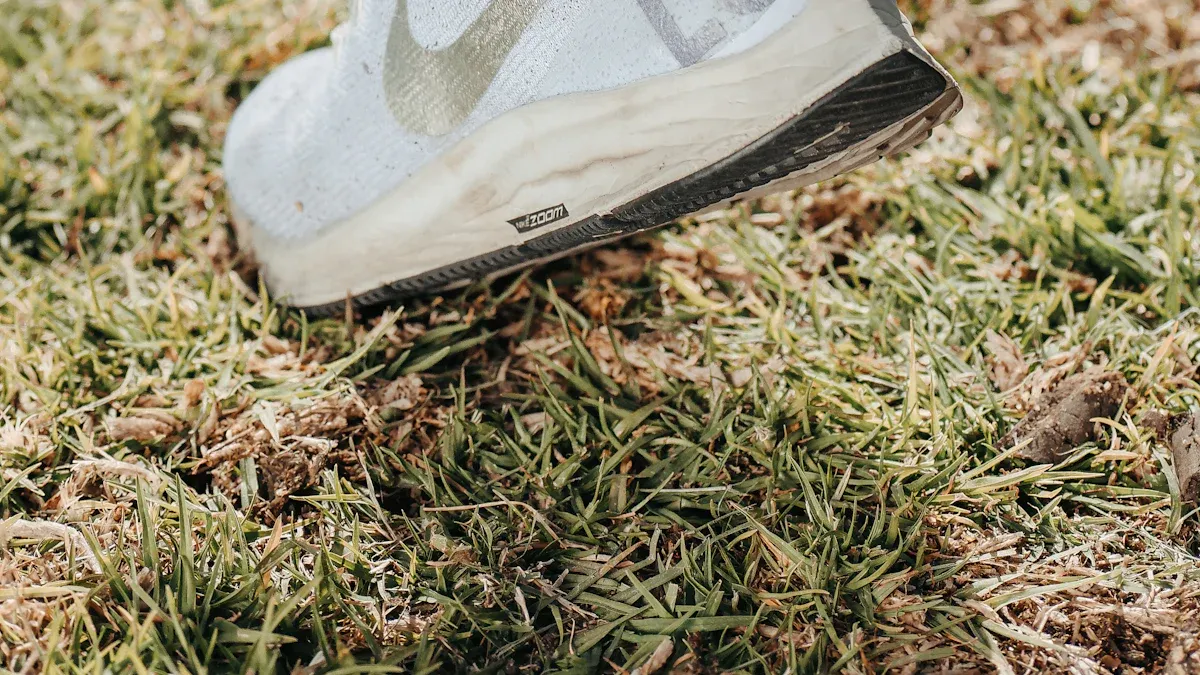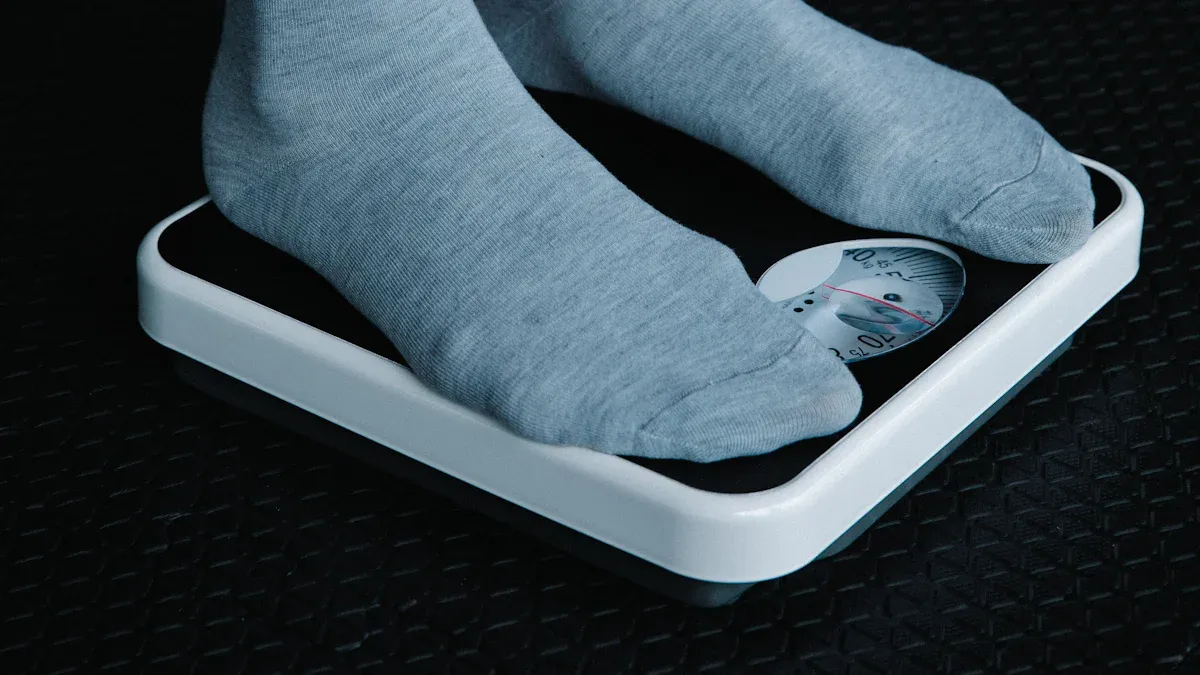
Your feet deserve better than being trapped in a damp, uncomfortable environment.
Breathable socks help you stay fresh by wicking away moisture and keeping your feet dry. This simple feature does more than improve comfort—it protects you from unpleasant odors and skin issues. Without them, your feet become a breeding ground for bacteria, leading to infections and discomfort.
Choosing breathable socks is not just about luxury; it’s about safeguarding your foot health every single day.
Key Takeaways
- Breathable socks pull sweat away, keeping feet dry and comfy. This stops bad smells and skin problems.
- Fabrics like Merino wool and nylon handle sweat well. They work great for different activities. Pick the fabric that fits your needs.
- Wearing breathable socks lowers the chance of blisters and foot fungus. Good socks help keep your feet healthy.
- Look for socks with sweat-wicking, air vents, and soft padding. These features make socks more comfy and useful.
- Breathable socks work in all seasons. They cool your feet in summer and warm them in winter. They are perfect for everyday use and exercise.
What's the Benefit of Breathable Socks?

Moisture-Wicking and Sweat Prevention
Your feet work hard every day, and they deserve socks that keep them dry and comfortable. Breathable socks excel at moisture-wicking, pulling sweat away from your skin and preventing dampness. Wool, one of the most effective materials for this purpose, can absorb up to 35% of its weight in moisture. This unique property keeps your feet dry and reduces bacterial growth, which is often the root cause of unpleasant odors and skin irritation.
When you wear breathable socks, you avoid the discomfort of soggy feet during physical activities or long hours of wear. A study involving military recruits found that socks made from a blend of Merino wool and polypropylene absorbed nearly three times more moisture than synthetic alternatives. This superior moisture management ensures your feet stay fresh and dry, even in demanding conditions.
Enhanced Comfort and Odor Control
Comfort starts with the right socks. Breathable socks adapt to your needs, keeping your feet cool in the summer and warm in the winter. Materials like alpaca wool and Merino wool offer exceptional breathability, ensuring your feet stay at an optimal temperature. These socks also wick away moisture, preventing the buildup of sweat that can lead to discomfort and blisters.
Odor control is another standout feature of breathable socks. Natural fibers like wool possess antibacterial properties that combat odor-causing bacteria. Unlike synthetic socks, which tend to retain odors when exposed to moisture, wool locks away odors and releases them only when washed. Research shows that wool retains significantly less odor intensity compared to polyester and cotton, making it a superior choice for freshness and comfort.
Improved Foot Health and Infection Prevention
Healthy feet are the foundation of your daily activities, and breathable socks play a crucial role in maintaining their well-being. By keeping your feet dry, these socks reduce the risk of fungal infections and blisters, which often result from prolonged exposure to moisture. Wool, the most hygroscopic sock fiber, absorbs moisture effectively, preventing the damp environment that encourages bacterial and fungal growth.
Breathable socks also contribute to long-term foot health. Comfortable feet improve your productivity and overall quality of life. Whether you're at work, exercising, or simply going about your day, breathable socks protect your skin and ensure you stay comfortable. Choosing the right socks isn't just about avoiding discomfort—it's about investing in your health and preventing issues before they arise.
What's the Risk of Non-Breathable Socks?
Blisters and Fungal Infections
Non-breathable socks trap moisture, creating the perfect environment for skin problems. When your feet stay damp, friction increases, leading to painful blisters. These blisters can worsen if bacteria or fungi invade the broken skin. Fungal infections, like athlete’s foot, thrive in the warm, moist conditions caused by poor sock ventilation.
A study comparing different sock materials revealed that socks made from advanced fibers significantly reduced skin lesions over time. Patients wearing fluorine-synthetic fiber socks experienced a 42.6% reduction in plantar pustulosis lesions, compared to just 2.7% for those wearing cotton socks. This highlights how breathable materials can protect your feet from harmful conditions.
Discomfort and Overheating
Wearing non-breathable socks often leaves your feet feeling hot and sticky. This discomfort can distract you during daily activities or workouts. Overheating also leads to excessive sweating, which worsens the problem. Socks that don’t allow airflow trap heat, making your feet feel suffocated.
Breathable socks solve this issue by regulating temperature and wicking away sweat. They keep your feet cool in summer and warm in winter, ensuring all-day comfort. Without them, you risk constant irritation and an unpleasant experience every time you wear shoes.
Long-Term Foot Health Issues
Ignoring the importance of breathable socks can lead to serious foot health problems over time. Chronic exposure to moisture weakens your skin’s natural barrier, making it more vulnerable to infections. Persistent fungal infections or untreated blisters can cause scarring or even permanent damage to your feet.
Patients in the same study reported significant improvements in their perception of foot health when using advanced fiber socks. Satisfaction scores favored these socks, proving that investing in breathable options enhances both comfort and long-term health. Choosing the right socks isn’t just about today—it’s about protecting your feet for years to come.
How to Choose Breathable Socks?

Best Materials for Breathable Socks
The material of your socks determines how well they manage moisture, regulate temperature, and provide comfort. Choosing the right fabric is crucial for keeping your feet dry and healthy. Some materials stand out for their performance:
| Material | Moisture Management | Durability | Breathability | Price |
|---|---|---|---|---|
| Polyester | Quick-drying | Good | Moderate | Low |
| Nylon | Excellent | Very Good | Moderate | Moderate |
| Merino Wool | Good | Excellent | High | High |
| Cotton | Poor | Low | High | Low |
Merino wool is a top choice for hiking and outdoor activities due to its superior breathability and odor resistance. Synthetic materials like polyester and nylon excel in moisture-wicking and durability, making them ideal for running or biking. Cotton, while breathable, struggles with moisture management and is better suited for casual wear in dry conditions.
Tip: For the best results, match the material to your activity. For example, choose Merino wool for hiking or bamboo fiber for yoga to maximize comfort and performance.
Features to Look For
Not all socks are created equal. To get the most out of your breathable socks, look for these essential features:
- Moisture-Wicking Properties: Materials like polyester, nylon, and Merino wool pull sweat away from your skin, keeping your feet dry.
- Mesh Ventilation: Strategically placed mesh panels improve airflow, reducing heat and moisture buildup.
- Cushioning: Extra padding in high-impact areas enhances comfort during physical activities.
- Arch Support: A snug fit around the arch prevents slipping and reduces fatigue.
- Seamless Toes: Eliminating seams minimizes friction and prevents blisters.
These features ensure your socks provide the comfort, durability, and breathability you need for any activity.
Note: Always consider the weather and distance when selecting sock thickness. Thicker socks offer more cushioning but may trap heat in warmer conditions.
Conclusion
Breathable socks are more than just a comfort upgrade—they are a smart investment in your foot health. They help you stay active and injury-free by reducing moisture, preventing blisters, and improving blood circulation. With the global performance grip socks market projected to grow from $1.3 billion in 2023 to $1.7 billion by 2028, it’s clear that more people are recognizing their value. These socks also enhance stability and reduce muscle fatigue, making them essential for sports and daily wear.
Don’t let poor sock choices compromise your health. Prioritize breathable socks to protect your feet, improve your comfort, and enjoy long-term benefits. Your feet deserve the best care, and the right socks can make all the difference.
FAQ
Why are breathable socks better than regular socks?
Breathable socks manage moisture and keep your feet dry. Regular socks often trap sweat, leading to discomfort and odor. By choosing breathable options, you reduce the risk of blisters, fungal infections, and overheating. They’re a healthier and more comfortable choice for your feet.
Can breathable socks help with sweaty feet?
Absolutely! Breathable socks wick away sweat and improve airflow around your feet. This keeps them dry and prevents excessive moisture buildup. If you struggle with sweaty feet, breathable socks are a must-have for staying fresh and odor-free throughout the day.
Are breathable socks suitable for all seasons?
Yes, they are! Breathable socks regulate temperature, keeping your feet cool in summer and warm in winter. Materials like Merino wool adapt to changing conditions, making them perfect for year-round comfort and protection.
What activities benefit most from breathable socks?
Breathable socks are ideal for activities like running, hiking, and gym workouts. They prevent blisters and overheating during intense movement. Even for daily wear, they enhance comfort and keep your feet healthy, no matter the activity.
How do I know if my socks are breathable?
Look for features like moisture-wicking materials, mesh panels, and natural fibers like wool or bamboo. Check the label for terms like "breathable" or "moisture-wicking." These indicators ensure your socks provide the airflow and dryness your feet need.
Related
1.The 11 Best Socks of 2025 →
2.Footwear for Psoriasis and Psoriatic Arthritis: A Systematic Review →
3.Moisture Wicking Socks - A Research Update →
4.Natural Fiber Socks vs. Synthetic Socks: What’s the Real Difference? →
5.Wool is naturally odour resistant →
